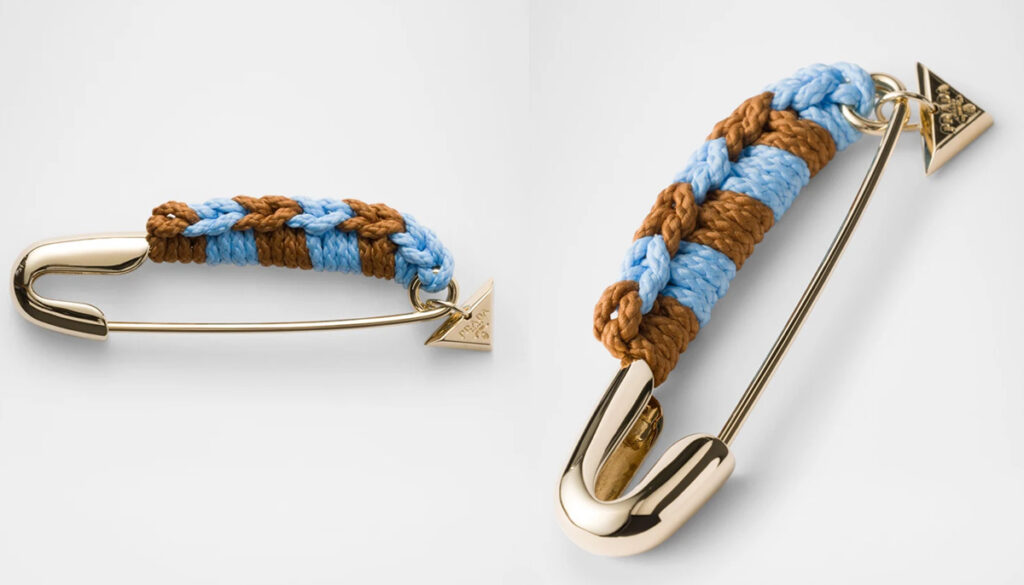Luxury fashion brand Prada has captured global attention by transforming an ordinary safety pin into a high-priced statement accessory. The newly launched “Crochet Safety Pin Brooch” features a large pin wrapped in colourful crochet cord, prominently displaying Prada’s iconic logo, and retails for approximately $775 (₹68,758).
From Mundane to Luxury
The launch highlights a growing trend in high fashion: taking everyday objects and elevating them into exclusive, high-value items. Designers are increasingly leveraging creativity and brand prestige to reshape perceptions of value, turning ordinary objects into symbols of status and style.
“Luxury fashion thrives on storytelling and rarity,” said fashion analyst Priya Mehta. “By converting a simple safety pin into a branded accessory, Prada reinforces its identity as a trendsetter while challenging ideas about what constitutes luxury.”
Consumer and Market Reactions
The brooch has elicited mixed reactions. Some consumers appreciate its playful and avant-garde design, while others question the price relative to the product. Despite the debate, items like this generate brand visibility, social media buzz, and aspirational appeal, which remain key drivers for luxury houses.
Fashion commentators note that such launches can influence broader trends, encouraging other brands to experiment with ordinary objects as statement fashion pieces, prompting consumers to rethink value, creativity, and brand loyalty.
Broader Implications for Luxury Fashion
The Prada Crochet Safety Pin Brooch reflects a shift in the luxury market, where imagination and brand storytelling often carry as much weight as the physical product itself. Exclusivity, design innovation, and cultural commentary are increasingly driving pricing and desirability, even for items once considered purely functional.
Analysts predict that as luxury fashion continues to blur the line between art, design, and utility, more everyday objects will appear on runways and in boutiques with elevated price tags, reshaping consumer expectations and brand narratives.

